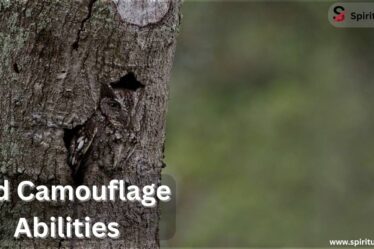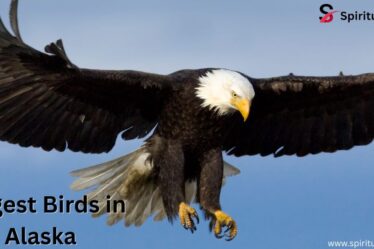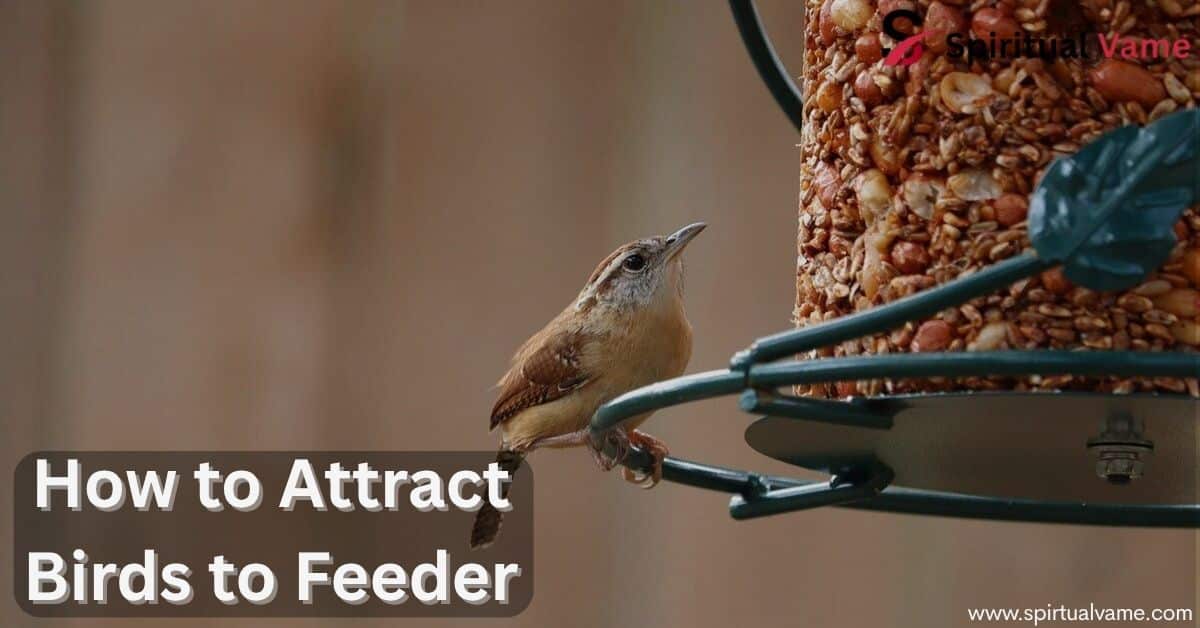
Attracting birds to your backyard can be exciting and rewarding. But sometimes, a new bird feeder might sit empty for days. If you are looking for simple tricks for How to Attract Birds to Feeder, you are in the right place. Birds need time to find a new feeder, but there are easy ways to help them. Using the right food, feeder, and location can make a big difference.
In this guide, we will share the best tricks for How to Attract Birds to Feeder. You will learn how to offer different foods, understand bird habits, and create a safe place for them. With a few simple steps, your feeder will soon be full of happy birds.
Some Tricks for How to Attract Birds to Feeder
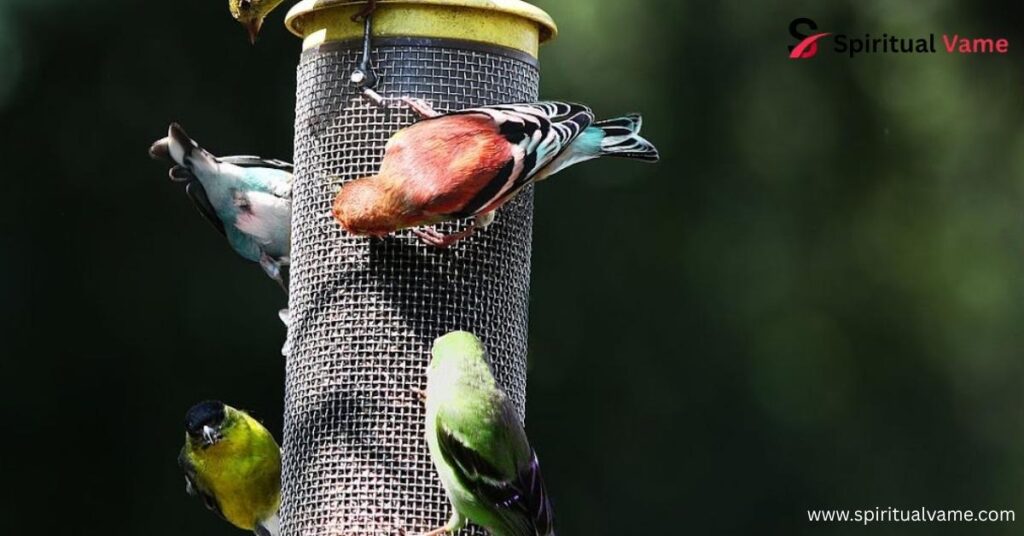
Look Around
Before placing your feeder, take some time to look around your yard. Birds like areas where they can easily escape to safety if needed. Trees, bushes, and other shelters help birds feel protected from predators. If your feeder is out in the open with no nearby cover, birds may not feel comfortable visiting. Observing your backyard and understanding the bird habitat around you is the first step.
Pay attention to the bird environment. Notice where you see the most bird activity, such as places where native species like nuthatches and downy woodpeckers often perch. Understanding the local birds and their favorite spots gives you a better chance of placing your feeder where they will find it easily. Also, observe the migration patterns and bird behavior that change with seasons to keep up with their bird ecology.
Proper Placement
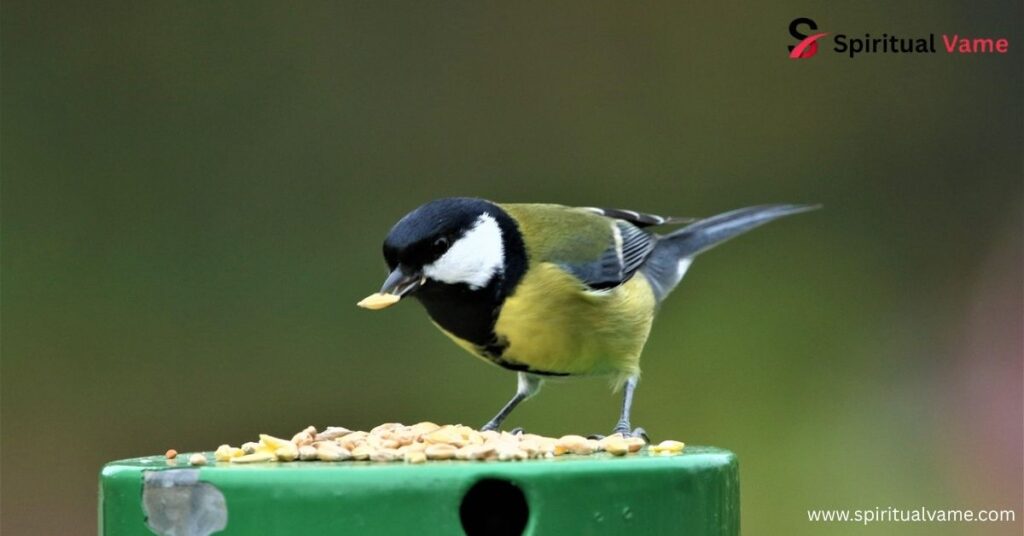
Choosing the right spot for your feeder is critical. Place the feeder near natural shelters like shrubs, trees, or a fence. However, make sure it is still visible enough so birds can spot it from the sky or while flying nearby. A poorly placed feeder hidden too much under thick branches may not get much attention. Think about providing a clear escape route if a cat or hawk comes near.
Additionally, keep feeders away from windows where birds can crash. Window strikes are a big danger to birds. Consider putting feeders either very close to windows (less than three feet) or far enough away (more than thirty feet) to reduce risks. Good placement not only supports safe feeding but also encourages consistent visits, helping you build a lively bird community.
Spread the Love
Sometimes one feeder isn’t enough. Different birds have different feeding choices and might prefer separate spaces. Setting up multiple feeding stations with a range of feeding blends and feeding spreads can attract a bigger variety of birds. A feeding spectrum of foods like grape jelly, peanuts, fruits, and millet appeals to many types of birds and supports a rich bird population.
Spreading feeders around also reduces competition among birds. Some species are shy and won’t visit if aggressive birds dominate the feeder. By offering multiple feeding selections around your yard, you encourage peaceful and regular visits. Each spot can cater to different bird diets and feeding behavior depending on the season and bird species active in your bird neighborhood.
Consider Other Needs
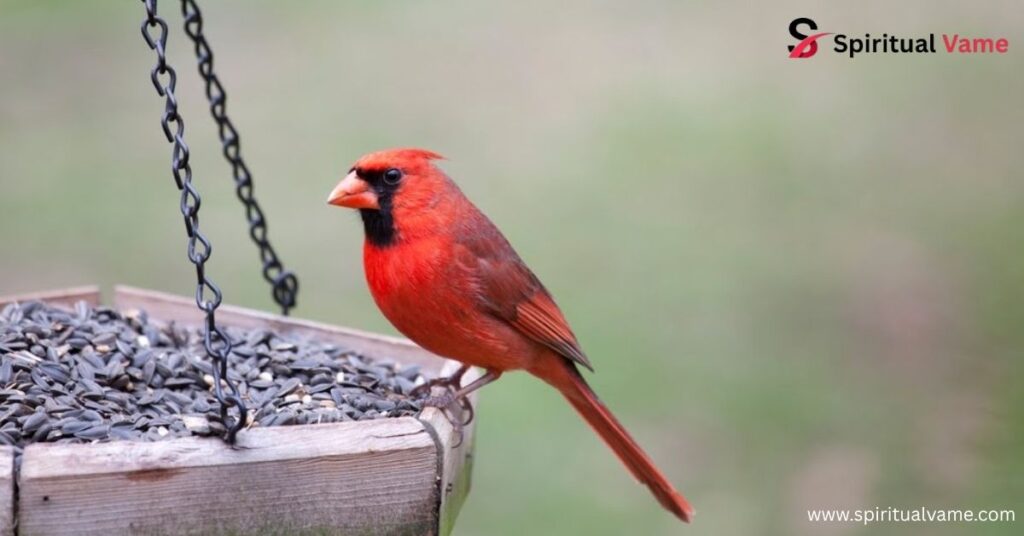
Birds are not only looking for food. They also need water, shelter, and a safe place to rest. Adding a birdbath or small fountain near your feeders helps meet their water needs, especially in dry months. Fresh water can attract species that may not usually visit feeders, creating a richer bird ecosystem.
Shelter is just as important. Planting bushes, evergreens, or using natural garden structures can provide places for birds to hide from predators and bad weather. The presence of plants creates a feeling of security and can even offer natural foods like berries. Always think about building a complete habitat that supports birds year-round, fulfilling their nesting, feeding, and resting needs.
Be Patient
Patience is key when using these tricks for attracting birds to a new bird feeder. Sometimes it can take days or even weeks for birds to notice a new food source. Birds are cautious creatures and may need time to trust a new spot. Keep your feeders full, clean, and freshly stocked with a delicious feeding menu to make sure visiting birds find a reason to return.
Also, keep an eye on seasonal changes. Some birds only visit certain areas during migration seasons. Understanding these seasonal patterns and adjusting your feeding spread accordingly can help you attract more birds throughout the year. Trust the process and enjoy the journey of building a beautiful bird-friendly backyard.
Tips to Attract Birds to Your Feeders
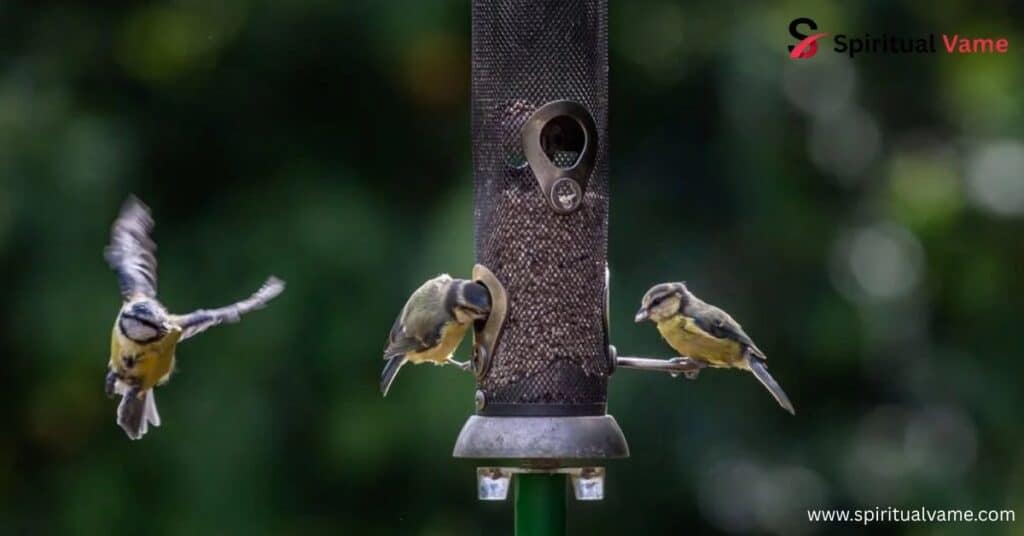
Attracting birds is easier when you follow a few proven tips. Creating a full-service bird station involves providing food, water, shelter, and safety. Using a mix of foods like sunflower seeds, cracked corn, fruits, suet, and mealworms meets the broad feeding spectrum of birds that might visit your feeder.
Always keep an eye on your feeder setup. Clean feeders regularly, provide fresh water, and plant shrubs around feeders. These small actions create a natural, welcoming environment that matches the birds’ needs. Maintaining a healthy feeding area increases the chances that many species will call your yard their favorite feeding stop.
Offer a Variety of Foods to Attract Birds to Your Feeder
Birds have different feeding preferences and dietary needs. Some love protein-rich foods like mealworms or peanuts, while others seek sweet treats like grape jelly or fruits. Offering a diverse feeding array ensures that you attract many kinds of birds. By providing seasonal foods, you meet the changing needs of migrating and breeding birds throughout the year.
Think of your feeder as a restaurant with a full feeding palette. Include choices like dried mealworms, live mealworms, suet, sugar water, and various seeds. This rich feeding blend helps satisfy a wide range of bird diets, making your feeder an irresistible stop for hungry visitors.
Try Mealworms
Mealworms are a favorite food for many birds, especially bluebirds and robins. Both live mealworms and dried mealworms offer excellent protein that helps birds stay healthy. To serve mealworms, use a small dish feeder or a specialized mealworm feeder to keep the worms from crawling away.
Adding mealworms to your feeding mix can make your feeder much more attractive to insect-eating birds. Especially during breeding season, high-protein foods like mealworms support the extra energy needs of parent birds feeding their chicks.
Birds Love Peanuts
Peanuts are packed with protein and are loved by bigger birds like blue jays, woodpeckers, and nuthatches. Using a peanut feeder allows you to offer either whole peanuts or shelled ones. Always choose unsalted, raw peanuts to keep birds healthy.
Birds like the downy woodpecker especially enjoy hammering peanuts out of feeders. Adding peanuts to your feeding spectrum ensures that larger species are also satisfied, bringing even more diversity to your backyard.
Remember Ground Feeding Birds
Some birds prefer to eat off the ground. Mourning doves, juncos, and certain sparrows are ground feeders by nature. You can scatter seeds like millet or cracked corn on a clean patch of ground or use a low platform feeder.
By including ground feeding in your feeding spread, you welcome a wider variety of birds who might otherwise skip a hanging feeder. Supporting every kind of feeding behavior makes your yard even more inviting.
Keep Track of Your Visitors
Keeping a journal of the birds visiting your feeder is fun and helpful. You can track bird species, note what food they prefer, and watch for seasonal changes. Apps and field guides make species identification easier and turn birdwatching into a lifelong hobby.
Understanding your regional birds, their migration patterns, and their feeding habits will help you adjust your feeding variety to suit the birds most likely to visit at different times of the year.
Understand Local Bird Species
Understanding local bird species is key to offering the right foods. By learning about species identification, feeding habits, and migration patterns, you can match your food offerings to the needs of bluebirds, robins, chickadees, woodpeckers, and more.
Spending time birdwatching and observing habitats helps you choose the perfect feeding selection. Whether it’s offering peanuts, suet, grape jelly, or live mealworms, knowing your regional birds ensures you create a healthy, inviting feeding environment year-round.
Offer a Variety of Foods
Offering a variety of foods helps meet the different tastes and nutritional needs of birds. A rich feeding spread attracts more species by supporting their natural feeding behavior and dietary diversity, much like creating a restaurant menu for birds.
Include protein-rich mealworms, high-energy suet, sweet treats like grape jelly, and seeds like sunflower seeds, millet, and cracked corn. This complete feeding palette ensures you attract and nourish a wide range of local birds all year round.
Get Your Neighbors Involved
Birds don’t just stay in one backyard — they travel around the bird neighborhood! Getting your neighbors involved in setting up feeders and planting bird-friendly plants can make your entire area a bird paradise. A community-wide effort creates more safe spaces and food sources, encouraging larger flocks to stay longer.
The more feeders and feeding stations spread across a bird sector or bird district, the more attractive your entire bird region becomes to migrating birds and native species alike. Building a network of bird-friendly spaces strengthens the local bird ecosystem and increases the chances of spotting rare species.
Keep Feeders Clean
One of the most important things to remember when attracting birds is to keep your feeders clean. Dirty feeders can cause the spread of disease among the bird population, hurting the very creatures you want to help. Regular cleaning protects the health of your visitors and encourages a thriving bird community.
Use warm, soapy water and rinse thoroughly. Let feeders dry completely before refilling them. A clean feeder keeps the feeding station safe and ensures that birds feel comfortable returning regularly. Good hygiene is part of maintaining a healthy feeding spread and supporting a vibrant bird ecosystem.
Use Plants for Shelter Around Feeders
Birds need more than food; they also need shelter. By planting native bushes, trees, and shrubs around your feeding area, you create a safe space for birds to hide, nest, and rest. Natural cover mimics their bird habitat and provides protection from predators.
Choosing plants that produce berries or seeds, like elderberry or serviceberry bushes, adds extra feeding variety to your yard naturally. These shelters enhance the bird environment and make your feeders much more inviting, creating a full feeding menu of food and safety.
Add Water to Your Landscape
Water is just as important as food. Adding birdbaths, fountains, or even small ponds encourages more birds to visit. Birds need water for drinking and bathing to keep their feathers in good condition.
Maintaining a source of clean, fresh water expands your feeding palette into a complete bird habitat. Water features bring a different range of birds, even those that might not visit for seeds, enriching your feeding spread and increasing bird diversity.
Maintain a Four-Season Habitat
If you want to keep birds around year-round, you must maintain a habitat that supports them through all seasons. In winter, offer suet, peanuts, and high-energy foods. In spring and summer, add fruits like grape jelly and sugar water for migrants.
Keeping your yard attractive in every season by offering a feeding variety ensures you meet the dietary needs of birds despite changes in weather. Seasonal feeding menus respect birds’ natural rhythms and their feeding behavior.
Garden Green
Using fewer pesticides and choosing native plants helps maintain a healthy environment for birds. A pesticide-free, native garden supports insects, seeds, and natural food that local birds need. A natural garden enhances the bird habitat and promotes a complete feeding blend for your backyard visitors.
Bird-friendly gardening respects the local bird ecology and gives birds a safe, nurturing space to thrive year-round.
Conclusion
Attracting birds to a new bird feeder takes time, patience, and the right strategies. By following these tricks for attracting birds to a new bird feeder, you can turn your backyard into a vibrant bird sanctuary. Remember to look around for the best feeder placement, spread the love with various feeders and foods, consider other needs like water and shelter, try different types of feeders, and most importantly, be patient.
Use a diverse feeding array that includes mealworms, suet, grape jelly, peanuts, sugar water, fruits, sunflower seeds, millet, and cracked corn to satisfy a wide range of feeding preferences and bird diets. Understanding your local bird species, their feeding habits, and seasonal patterns ensures your feeders meet their feeding diversity needs all year long.
With a thoughtful feeding selection, clean feeders, natural shelter, and a little patience, you’ll enjoy the beautiful sight and sounds of a thriving bird community right outside your window. Happy birdwatching!


